#ocean swimming
Explore tagged Tumblr posts
Text

these days
#itellyouthistobreakyourheart#poetry#transsexual#anarchist#butch dyke#trans poetry#dyke#grief#collage#grief poem#ocean#smokes#smoker#ocean swimming#grounding#old poem
22 notes
·
View notes
Text
pov you're a swimmer.
your hair is dry from either chlorine or sea salt. you gotta choose or you gotta pick both. either way, you're still a swimmer. whether you're a pool swimmer or a sea swimmer. you'd still have dry hair from all that swimming.
#sea swimming#wild swimming#ocean swimming#swimming#competitive swimming#breaststroke#backstroke#swim culture#swimmer culture#swimblr#swimmer#swim problems#swim meet#swim team
13 notes
·
View notes
Text
imma move to somewhere by the beach, then I can swim all year rounddddd
9 notes
·
View notes
Text
here’s a commission i’ve been working on 💤 tryna make the most of the background shdfhdj

#furry#fursuit#fursona#underwater#ocean#sea#swimming#otter#otter fursona#fursonas#otters#sea otter#under the sea#ocean swimming#otter swimming
5 notes
·
View notes
Text
Pretty much nothing this post says about Tama is true. No one has ever died there during patrol hours (the surf club motto is literally "no lives lost"), the beach is always there (you might be thinking of mackenzie's bay up the road, which is smaller some years than others). It's neither the smallest nor the most dangerous beach in NSW. Yes it's true we do a lot of rescues but, again, no lives lost. The rips are visible and marked out by clear signage. And that northern rip is incredibly variable, depending on tides/swell/wind direction. The littoral current (trough that runs parallel to the beach) is often more of an issue - that's where most of the rescues happen, towards the south side of the beach.
source: I am a lifesaver there
I'm really only well-actually-ing this post because yeah fear the ocean the fear is healthy but actually there's SO much support and education around beach safety so you can actually enjoy being in the water, especially in Australia. Tamarama SLSC, for example, runs water safety courses for refugees and migrants, ocean confidence sessions, social ocean swims and rubbish pickups. We spend every weekend for eight months of the year giving up our time to ensure that people CAN enjoy the beaches safely.
Here I am at scary old Tama:


We all love the beach, right? I sure do. Where the sea meets the land is a magical place. It is the overlap of two very different worlds; our sunny, sandy, beautiful home and the alien waves that beckon you into the inhospitable wilderness of the ocean. When crossing that foam-fringed boundary, one must remember that you are no longer in your world. You are entering the sea, and the sea is vast and dark and dangerous. It is more untamed than the wildest jungle and full of creatures that can kill you in a hundred different gruesome ways. Every wave whispers to you that you do not belong here, you may only visit for a brief time if you want to leave with your life. Hold tight to the warm sunlit sand that fringes the barrier of this place, or you may never see it again. Welcome to the beach. Enter at your own risk.
1. Tamarama beach, Australia
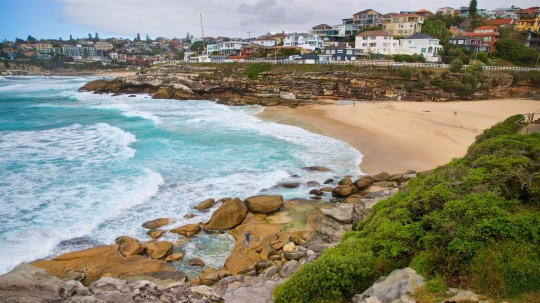
This is know as both the smallest and the most dangerous beach in NSW. There is a permanent rip current that runs along the rocky northern shore, but at any given time there could be more hidden in the surf. Large waves break just a little ways offshore, posing a hazard to swimmers but an attraction for surfers. Although there are rarely deaths here, lifeguards have to rescue multiple people a day. Interestingly, this beach is only around sometimes! Occasionally all the sand will wash away and all that’s left is a rocky outcrop. There’s no way to be certain when the beach will come back or how big it will be or what it might look like. I guess it never gets boring to visit.
2. Isle of Ré, France

This island is not the only place you can go to see square waves, but it is one of the places most famous for this strange phenomenon. This is called a cross sea, and occurs when two opposing wave patterns intersect. Although this is certainly a tourist attraction, it is best to observe from a distance, as cross seas can be very dangerous to both ships and swimmers. Cross seas can cause powerful rip currents and walls of water up to 10 feet high, rolling ships and dragging people underwater. (As a side note, my mother thought I had made up cross seas as a freaky supernatural event in my book. Unfortunately, I did not.)
3. Dumas Beach, India
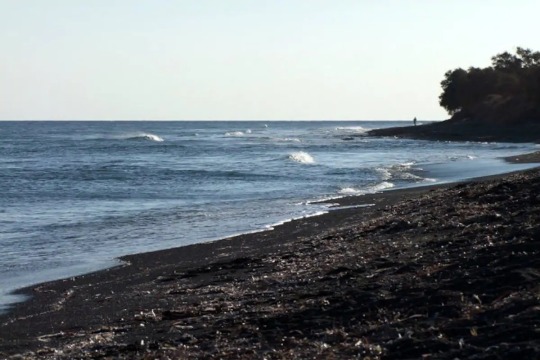
This is supposedly one of the most haunted places in India. Although this beach is full of tourists during the daytime, no one remains after dark, for fear that they will become the next ghost to wander the sand. Apparently, this beach was once used as a burial ground, and said to be black due to the human ashes mixed in. At night, people report hearing voices and seeing apparitions, and even dogs behave strangely once the sun goes down. There have also been multiple unexplained disappearances and at least one recorded death. Whether you believe in ghosts or not, there definitely seems to be something eerie happening on this beach.
4. Morecambe Bay, UK
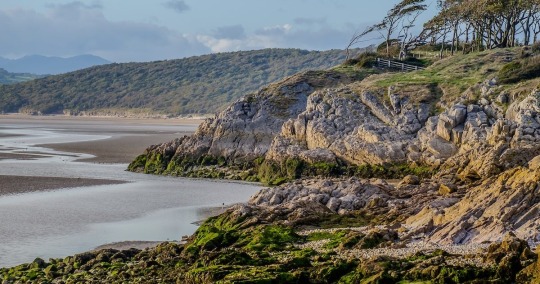
This is an interesting one, as it’s not technically the water that’s dangerous. The ground is. This estuary features extreme tides, with the water level dropping and rising up to 32 feet twice a day. This exposes an expanse of mud flats and channels which are composed of loose, wet material that can absolutely suck you in and trap you. If this happens when the tide is coming in, it can quickly turn deadly. This has happened many times going back through history, including one incident in 2004 where 23 people died. Yes, all at the same time. No, I don’t want to delve into that incident too deeply in this list as it’s extremely horrifying and tragic. Feel free to research it yourself.
5. Monastery Beach, Oregon
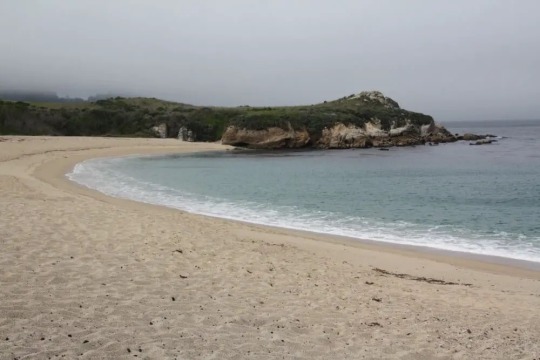
This has earned its nickname “mortuary beach” by being extremely dangerous. Over 30 people have died here, including people who weren’t even in the water. In 2015, a woman walking along the beach was dragged in by a wave and drowned. The beach has multiple factors that make it so deadly, including a steep drop off, unpredictable waves, and strong undertows. This beach isn’t even safe to walk on. I um. Don’t like that.
6. Hanakapiai Beach, Hawaii

Despite its beauty, this Hawaiian beach is not recommended for swimming except for expert surfers. During the summer, this beach is a popular place for hiking, sunbathing and sightseeing, but during the winter the sand is washed away and the waves crash against the cliffs directly. Even in the relatively safe summer months, this beach has no barrier reef to break up the strong waves and powerful currents, which leads to a dangerous situation where swimmers can quickly be swept out into the open ocean and drown. At least 30 people have died here, and 15 of the bodies have never been recovered.
7. Lake Michigan. Just, all of it.
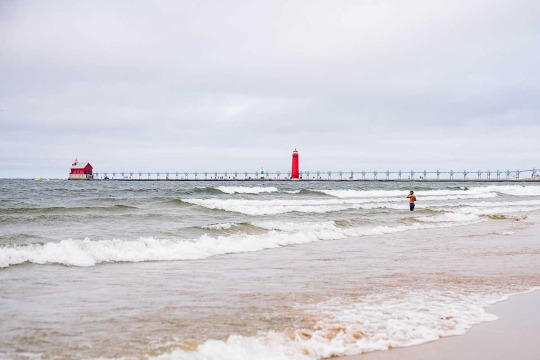
Despite all the Great Lakes being somewhat terrifying, Michigan takes the title of the most dangerous lake in the country. Yearly, Lake Michigan has more drownings than all four other Great Lakes combined. The reason that Michigan is especially hazardous is that, well, it’s kind of weirdly shaped. Thanks to its 300+ miles of uninterrupted parallel shorelines running north-south, it forms huge waves and strong riptides and long shore currents. It is also a question of numbers; Lake Michigan has more public beaches and large population centers than the other Great Lakes. All in all, a recipe for disaster.
8. Playa Zipolite, Mexico
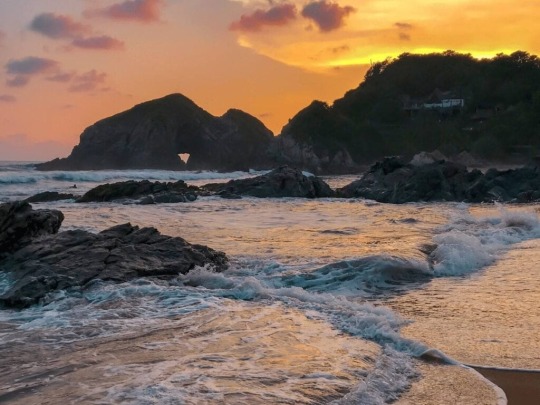
This is also called the “beach of the dead”, so it’s inclusion on this list seems pretty self-explanatory. These waters have strong undercurrents that rotate in a circular pattern, either pushing you into shore or pulling you out to sea. There is a pervasive rumor that 50 people drown at this beach a year, although this is… somewhat exaggerated. In fact, very few people drown at this beach these days, as it has actually gotten less dangerous over the years. There used to be a steep drop-off that would catch people by surprise, but due to several severe storms in the early 2000s, the beach has eroded back and now gently slopes down instead. Although very few people die at this beach nowadays, multiple rescues are performed every day due to the dangerous currents.
9. Cyclops, Australia
This is a particular type of wave that forms off the coast of Esperance, Australia, as the sea floor rapidly goes from deep, open water to a very very shallow reef. It is… unsettling. The longer I look at it, the weirder it gets. It’s like an ai generated image. I couldn’t even pick one picture of it so I made you a collage.
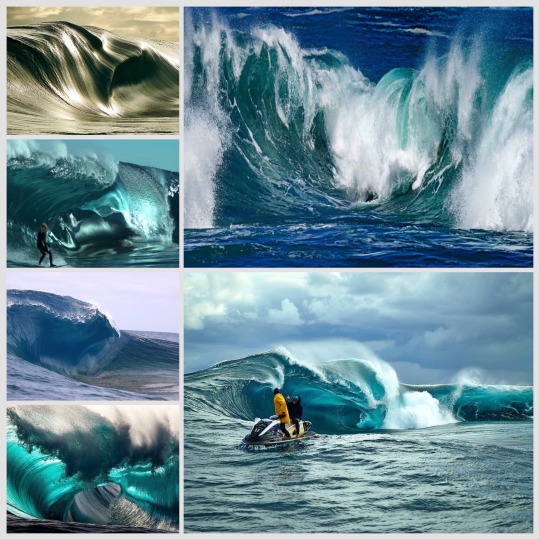
It is considered one of the most dangerous surf spots in the world, and can only be accessed by boat. To quote pacific surf dot com, “the reason the wave is dangerous is because it does not act like any other wave in the world. It engulfs itself due to the massive change in the ocean floor when the wave rolls up.”
10. Nazare, Portugal
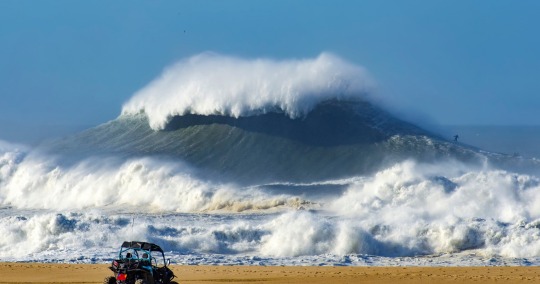
This area of Portugal is home to some of the biggest waves in the world. Just offshore is an underwater canyon, plunging down to 16,000 ft deep. This allows large, fast deep-water waves to move into shore unimpeded, and when they hit the shallows close to shore all the water gets suddenly pushed up, resulting in waves up to 80 ft tall. I think the picture speaks for itself in this case. Probably best to not get in the water if you see that shit.
That was fun, wasn’t it? Before I go, let me end this on a different note than the rest of my lists; some actual advice for if you should you ever decide to visit these beaches (or any beach, really). Rip currents are incredibly strong (believe me, I know) but very narrow currents that run perpendicular to shore. To get out of a rip current, swim parallel to shore. Trying to fight the current will just tire you out and eventually leave you exhausted and way the fuck out in the ocean, which is typically when you die. Swimming parallel to shore will get you out of the current, and once you’re free you can swim back in at your leisure. And, just in general, never fight the sea. The sea will win.
9K notes
·
View notes
Text
The Ultimate Open Water Swimming Checklist: Your Guide to a Successful Swim
Open water swimming events offer a unique and exhilarating experience, vastly different from pool swimming. Whether you’re preparing for a race or a leisurely swim, having a comprehensive checklist can enhance safety and enjoyment. Here’s an essential guide covering everything from entries to wildlife encounters.
**1. Starts: Beach, In-Water, Dive**
The start of an open water swim can vary depending on the event and location:
**Beach Starts:** Common in many races, a beach start involves running or wading into the water from shallow depths. This method may require timing your entry with wave breaks and duck diving under breakers, and a lot of jostling with other swimmers. Practicing specific race entries for your event is crucial.
**In-Water Starts:** Used in deep water races, this method requires treading water while waiting for the signal. It can be more challenging due to the lack of a stable surface. Sculling and kicking in place can act as an engine idling method for a fast reaction time and start. Training sets from the middle of the pool can help with this.
**Dive Starts:** Less common but used in certain races, divers start from a platform or dock, diving into the water to begin their swim. This method requires precision to avoid injury and ensure a smooth entry. Practicing and refining your diving technique, and ensuring a safe entry on race day, are essential.
**2. Sighting: Heads-Up Swimming, Sighting**
Effective sighting is crucial for staying on course:
**Heads-Up Swimming:** This technique involves lifting your head periodically to check your direction. While it can disrupt your stroke, it's necessary for navigation. Sighting and breathing can be done on a three-stroke rhythm. Lift your head on the first non-breath stroke for a quick snapshot, extend one arm for balance, lower your head on the second stroke, and breathe on the third stroke. Repeat as needed to stay on course without slowing down your pace.
**Sighting:** Use landmarks, buoys, boats, or other swimmers to guide your course. Practice sighting during training to improve your navigation, and fitness for the technique without losing rhythm.
**3. Supported and Unsupported Swims: Kayaker, Crew**
Support levels can vary depending on your event:
**Supported:** A support crew, such as a kayaker or boat, provides safety, navigation, and fueling. For major channel swims, support boats are often experienced sailors who help with scheduling optimal swim dates, timing currents, and navigating busy shipping channels. They act as or transport your larger crew and observers, manage boat traffic, coast guard, and border officials in international crossings. Smaller support crafts, like kayakers, provide direct observation, communication, and feedings. Note that official races and ratified crossings have rules prohibiting support vessels from physically assisting or coming into contact with the swimmer.
**Unsupported:** In some races or solo swims, you may swim without support. In such cases, it’s vital to be well-prepared with safety gear like a bright-colored float and cap for visibility. Following event directions, or research the conditions and boating traffic for unsanctioned events. Understand the swim route and check if there are checkpoints for hydration or fueling. For swims longer than an hour, consider carrying hydration or fuel in your suit or buoy if support stations are unavailable.
**4. Feeding: Treading, Floating, Feeds**
Managing nutrition and hydration requires planning:
**Treading Water and Floating:** If you need to take a break, tread water or float on your back while consuming food or drink. Practice this technique to maintain buoyancy and keep your energy up. During pool sessions that exceed an hour, start incorporating feeds without holding onto the wall or putting your feet down to minimize rest time and refine your body’s tolerance for feeds.
**Moving Feeds:** For races with organized aid stations, practice reaching for and consuming food while swimming. Efficient handoffs and timing are crucial, so training for this process can help optimize performance.
**5. Buoys and Turns: **
Efficient turning is essential for maintaining speed and direction:
**Corkscrew Turn:** This technique involves a quick, controlled spin from freestyle to backstroke and back, either clockwise or counterclockwise, depending on the course route. It's especially useful in races with multiple laps or tight turns, where competitive swimmers aim for the sharpest line around turns.
**6. Goggles and Caps: Dark and Light, Anti-Fog, Latex versus Silicone**
Selecting the right goggles impacts visibility and comfort:
**Dark vs. Light Lenses:** Dark lenses are ideal for sunny conditions to reduce glare, while light or clear lenses are better for cloudy or overcast conditions. Have a backup pair in case one breaks or gets misplaced. Get 20% off your own custom goggles from the Magic5 with code DALY20
**Anti-Fog:** Invest in goggles with anti-fog coating to maintain clear vision. Avoid rubbing the inside of the goggles; instead, rinse and air-dry them after swims. If the anti-fog coating wears away, use a small dab of No Tears baby shampoo as an alternative. Apply it to the inside of clean dry lenses, and keep them dry throughout your swim.
**Caps:** Latex caps are cheaper, thinner, and tackier. They are less warm, making them ideal for warmer events. Their tackiness helps prevent them from slipping off your head or goggle straps, though they tend to have a larger, rippled fit and may not be suitable for those sensitive to latex. In contrast, silicone caps are slightly more expensive, thicker, and warmer, offering additional warmth in colder conditions. They provide a more tailored, streamlined fit but are less tacky and can be more prone to slipping, which may cause goggle straps to slide. Swimmers should decide whether to wear their goggle straps under or over their cap. Wearing them underneath may offer a more secure fit but less flexibility for mid-event adjustments. Some swimmers use a double cap strategy: a latex cap underneath for grip, followed by goggles, and a silicone cap on top for a streamlined fit.
**7. Suit and Chafe, Grease**
Proper suit and skin care are vital for comfort and performance:
**Suit:** Ensure your suit or wetsuit fits well to reduce chafing, water-logging, and drag. Test it in practice swims to ensure comfort and refine your feel for competition suits or wetsuits.
**Chafing:** Apply anti-chafe cream to areas prone to irritation, such straps, seams, neck, armpits, and inner thighs.
**Grease and Sunscreen:** Use combinations of lanolin, petroleum jelly, zinc oxide, and sunscreen, or specialized swim grease to prevent chafing and sunburn. These can also provide marginal warmth for cold water swims.
**8. Salt vs. Fresh Water**
Different types of water affect your swim differently:
**Salt Water:** Provides more buoyancy, which helps you stay afloat but can be more abrasive to your skin and irritating to your eyes, nose, and mouth.
**Fresh Water:** Generally less buoyant but also less irritating to the skin, eyes, nose, and mouth.
**9. Distance**
Be mindful of the distance you'll be swimming:
**Preparation:** Train specifically for the swim distance, incorporating both long and short sessions to build endurance and pace. Practice pacing to ensure you have enough energy for the entire distance.
**Pacing:** Open water swims can be unpredictable, so trust the fitness and pacing you've developed in the pool. Use perceived exertion and feel as your measures for effort and intensity, rather than relying solely on distance traveled or time in the water.
**10. Wildlife**
Encountering wildlife is part of open water swimming:
**Safety:** Be aware of local wildlife and understand how to react if you encounter them. Most wildlife will avoid swimmers, but knowing the precautions is beneficial.
**Education:** Learn about local species and any specific safety tips or protocols for the area.
**11. Weather: Water/Air Temp, Currents, Tides, Sun, Rain**
**Water/Air Temperature:** Check forecasts for both water and air temperatures and adjust your gear and training accordingly. Cold feeds and electrolytes may be more necessary in warmer conditions, while cooler swims might require warmer feeds and less hydration. The ratio of water to air temperature and whether the sun is out can greatly influence how you feel. Prepare in conditions as specific to your event as possible for optimal acclimatization.
**Currents and Tides:** Be aware of currents and tides as they affect navigation and speed. Plan your swim timing around these factors and heed information from race directions and support crews.
**Sun:** Use long-lasting, waterproof, high SPF sunscreens and consider reapplying as necessary.
**Water Quality:** Rain and high temperatures can affect water quality. Consult local data and consider updated vaccines and health precautions.
** Motion sickness** Seasickness is not just a risk for those on the boat, but can also happen to swimmers in the water, particularly on long choppy swims. Over the counter oral motion sickness medication like dramamine, or prescription patches like scolapalmine can be helpful, but its important to practice your tolerance for and the effectiveness or side affects of these medications prior to your event.
**12. Planning: Course route, safety meeting, packing**
Understanding the course is crucial for a smooth swim:
**Website Route:** Review the swim course on the event’s website. Familiarize yourself with the layout, buoys, and entry/exit points.
**Athlete Meeting:** Attend pre-race meetings to receive final instructions, understand last-minute changes, and clarify any concerns about the course or logistics
** Create a checklist and pack ahead** Create a list of essential items, and pack your swim bag ahead of time. Include back ups in the case that something breaks, you need extra, or it’s misplaced. Point to point races may include a bag check. Consider items you will need at the event finish, whether you check your bag with the event, or hand it off to friends and family.
By following this comprehensive checklist, you'll be well-prepared for a successful and enjoyable open water swimming experience. Practice and preparation are key to navigating the unique challenges of open water swimming with confidence. Need help planning and programming for your next open water swimming event? Schedule a complimentary call, or book your next coaching call now!
#open water#open water swimming#open water swimmer#wild swimming#lake swimming#sea swimming#ocean swimming#open water racing#5k swims#marathon swims#marathon swimming#channel swimming#channel swimmer#endurance#distance swimming#triathlon#triathlon swim
0 notes
Text

#ocean swimming#exercise#water is life#asthetic#relaxedswimmer#moving water#vacation#swimming pool#sunscreen#swimwear
0 notes
Text

#brown moodboard#brown sugar#ocean life#ocean aesthetic#ocean day#ocean dive#ocean swimming#ocean swim#golden sea#golden sun#sun rays#sunlit#sunlight#sunshine#sun bright#ocean#oceancore#ocean view#ocean vibes#sea of love#seaside#sea salt#sea#beach babe#beach bum#sun goddess#sunray#sunkissed#sunset#sun rise
0 notes
Text

IF YOU'RE TIRED OF HOUSE CATS YOU SHOULD PET A WILD LION!
#eve online#eve#starfield#meme#comparing starfield to eve is like comparing swimming in a pool#to swimming in an ocean#full of jellyfish#and sharks#and international shipping cargo freighters
11K notes
·
View notes
Text
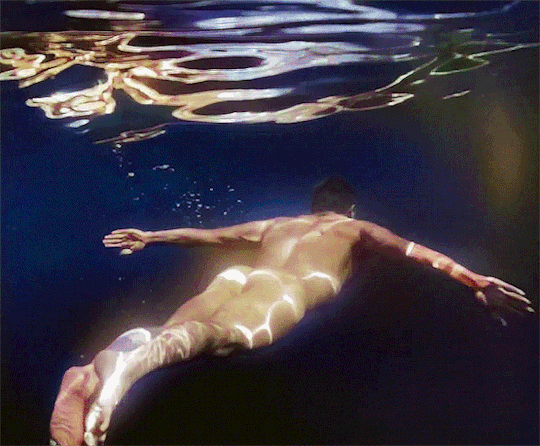
#james yates#ocean#perfect male body#hot#stud#shirtless#hunk#round bum#muscles#feet#boyfriend#swim#ea#poseidon#water#swimming#muscles stud#yatesy17#hot guy#beach#back muscles#gym bro#fitness#hot abs#male model#hot bum#mermaid#merman#deep sea#diving
3K notes
·
View notes
Text




post training session selfies
11 notes
·
View notes
Text
I’m getting the swim pads now cus I got swim in like 4 days and I’m on my period rn…
0 notes
Text




🌊 Low key, low tide 🌊
Went to the beach today, saw some pretty sights :)
Hope everyone's staying cool in this heatwave!
#really living up to my namesake with this post#&tib#my photgraphy#photography#naturecore#moon#beach#oceancore#ocean#sailing#sunset#swimming#waves#celestial#cottagecore#cottagecore aesthetic#beach aesthetic#princesscore#fantasycore#tropical#whimsical#soft aesthetic#softcore#aesthetic#soft girl#pastel#pink#pink aesthetic#art#east cost
3K notes
·
View notes
Text








phlyimages
#australia#ocean#surfing#surf's up#ride the wave#just keep swimming#sharks#ocean life#oceancore#curators on tumblr
3K notes
·
View notes
Text
I'm contemplating teaching masters classes and I'm curious. Also, if your knee jerk reaction is self-effacing about how you know all the strokes and can tread water but you're not a great swimmer, you are objectively wrong. This is not in comparison to Katie Ledecky or Michael Phelps, this is average Joe.
2K notes
·
View notes

